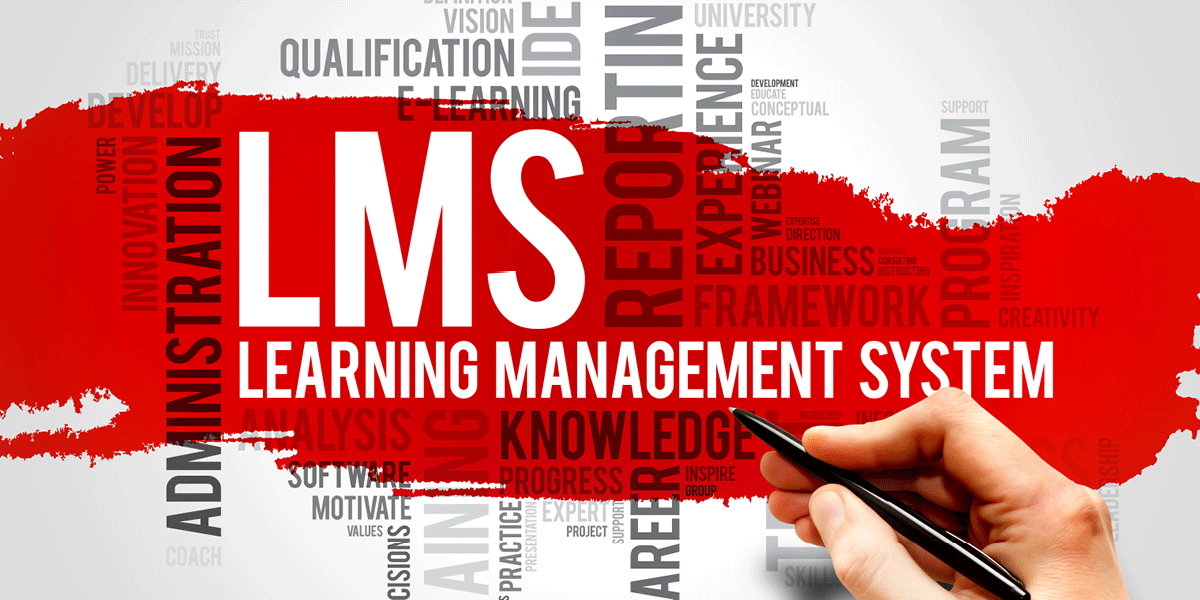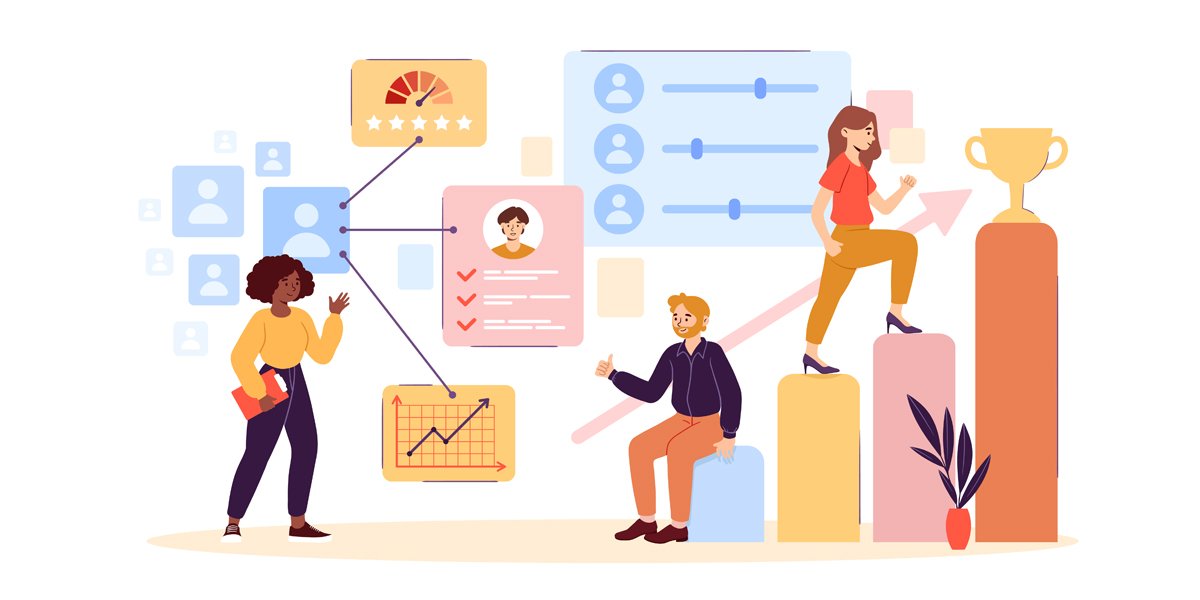Modern Learning Management System (LMS) solutions are robust software applications that provide on-demand access to a company’s educational courses, online training, or other learning and development programs. A common feature is the ability to track completed training for each learner while delivering the best possible learning experience. Although non-digital LMS solutions have been around since the early 1920’s, the advent of the digital age has coincided with an increased emphasis on evidence-based performance. Additionally, because of a combination of market influences, including the recent massive expansion of remote work, the number of solutions currently available has exploded to over 800 providers. With so many options, it can be daunting to successfully identify the LMS that meets the unique requirements of your client’s organization. This guide will help you navigate the many considerations for selecting the right solution.
First Consideration: What Metrics Will Best Determine Learning Success For Your Client’s Organization?
It’s crucial that you start by focusing on metrics that will best determine which solution meets their unique learner performance requirements. Metrics might include:
employee effectiveness and efficiency
employee engagement
employee retention-attrition, and
employment progression programs.
Facilitated focus group data collection, properly designed and executed, is a useful way to acquire necessary information to deliver the desired outcomes.
Second Consideration: How Will Your Company’s Learning and Development Strategies Evolve and Adapt to Industry Change?
Industries continue to become more complex each year as global conditions evolve or devolve. As a result, most companies are finding that they must maintain competitiveness by developing a workforce of vibrant, skilled and knowledge-driven employees, led by highly capable leadership. You can help your client face this challenge successfully by utilizing thoughtful approaches to re-learning and upskilling their teams.
Engage employees to own organizational priorities
Start with the employees themselves, who are navigating operational change while experiencing the advancement of digitized, knowledge-based economies. Most large workforces require constant collaboration among numerous cross-generational teams, with interaction in evolving social exchanges. Colleagues have differing attitudes and competencies, so it’s vital to foster an environment that encourages employee cooperation in alignment to organizational culture, mission and goals.
Be sure to adapt learning and development stewardship for employees at a tactical level, and for leadership at a strategic level. That way policies can up-skill, re-skill and engage teams in better teamwork, all with a clear focus on improving performance and operational results. As an external consultant to the organization, you play a key role in helping facilitate this change so they are positioned to select, deploy and utilize the right LMS solution to meet their scalability requirements.
Conduct research, a focus group and a market analysis
Once stewardship is established, you are ready to begin comparing solutions to find the LMS that is best aligned to internal priorities. It will take some work to narrow options down from 800+ to three or four key areas, so don’t leave out adequate research. Find out why one LMS is more highly sought-after than another… whether it is features, pricing, scalability, support, or other differentiated specializations. For instance, adoption of one LMS may have a strong track record with companies who are in a business growth cycle and hiring large numbers of similar employees. Another LMS may have stronger credentials for enabling employee vertical growth in a specific industry. Using an apples-to-apples features matrix is a key component to your client’s leadership team.
Case Study: Learning and Development Scalability Challenge for Government Contractor
During a recent two-year employment increase, a U.S. government contractor swelled from 20 to 200 employees, plus a slate of new sub-contractors. With so many new boots on the ground, they quickly realized it was time to institute a formalized training curriculum to ensure critical compliance requirements would continue to be met across the workforce. They also saw the opportunity to provide new up-skilling opportunities for established team members, and wanted to make maintain focus on sustaining their thriving culture.
Taking new hire onboarding from simple, informal table-top discussions for employees, contractors, HR, managers and executives to a full LMS was a heavy lift. The start-to-finish timeline was an aggressive six weeks, with the majority of work to be completed in three weeks. The first priority was identifying a learning management system that met their budget and essential feature requirements.
Research and Focus Group Results
After initial research was completed, a focus group was held with central decision-makers in the organization. The group identified unique key features tied to internal learning and development objectives that would better align employees to organizational goals, performance outcomes and cultural needs. Must-haves included:
integration capability within their current enterprise human resource application
automation of processes to deliver training and document accomplishments
the ability to track, analyze, and report results, and
being able to use turn-key training and custom course content within the system.
The group also required the ability to leverage sophisticated analytics to identify training and learning gaps, plus the ability to use reports to track learning improvements to organizational results.
Market Analysis Results
The next step was to conduct a comprehensive market analysis of current Learning Management System solutions (LMS) in the marketplace that matched requirements while identifying and rank ordering the top three that met all criteria. It began by selecting 20 of the most consistently mentioned vendors from seven well-known industry “Top-20” publications, including g2, Capterra and eLearning-today.
20 LMS vendors were selected, then 100+ key features common to them all were categorized to create a short list of essential considerations, such as:
Cost, to include fee itemization and negotiation ability
Client-Identified features, as determined from focus group input
Implementation, such as how each company supports LMS integration, formats it, how long it will take get up and running (typical 6-12 weeks)
Support, to include level of concierge coverage requested by internal tech and admin, the requirement of no robo-menus, and fair use guidelines
UI / UX, such as rating user-friendliness for admin & end users as they customize, learn, register, login, assign, alert, enroll
Collaboration, such as gamification and inherent communication capabilities for instructor and learner, plus colleague collaboration
Analytics, such as easy-to-use tracking and analyzing of employee capabilities related to organizational objectives
Content, authoring tools to integrate, add and customize learning paths
Once the comparison data was set, it was time to narrow down the field to the right solution.
Taking the list down from 20 to 8 vendors
The focus group rank ordered the 100+ essential features on a scale of 1-5, with 1=highly essential and 5=not essential at all. This quickly reduced the solutions to the top eight vendors best aligned to these added client requirements. Using measures detailed in the comparison matrix, each of the vendors verified features, one-by-one. For validation, trial software versions were loaded, followed by a full process functionality and UI / UX test across each solution’s capabilities. This testing provided an important point of view similar to that of a first-time user, with testers being able to experience look and feel, determine ease of use, explore functionality and consider level of intuitiveness.
Reaching the final selection
After the essential features list were finalized, the eight trial versions compared, and all investigative stages complete, a detailed recommendations report was presented to the company’s leadership, who reduced the vendors from eight to a final three solutions. Because each solution provider was a master of their domain, each was invited to demonstrate their solution’s complete functionality and potential in front of the leadership team, followed by increased scrutiny in panel Q&A sessions.
This important deep-dive identifying first the top 20, and then the narrowed group of eight, was completed in three weeks, then the company conducted a final round of internal deliberations. After one week, they selected the winning LMS, which best aligned with their learning and development objectives.
Additional Tools And Resources For How To Select The Best Modern Learning Management System (LMS)
Within an extremely aggressive timeline, we collaborated closely with internal and external resources, navigated lengthy and complex subject-matter, generated a business decision-making dossier, and the company then acquired the best modern learning management system for their organization. With the increased training capability an LMS provides, together with the need to reach employees remotely due to the COVID pandemic, the LMS solutions market has truly underwent explosive growth. Consider this:
98% of educational institutions are moving their learning offerings online and
there is a 19% increase in LMS market size as corporations widely adopt advanced learning solutions
large corporations are investing heavily to upskill their labor forces using automated platforms
Be sure to keep these important data points in mind, as you undergo this process for your client. For more useful information on learning and development trends, as well as the investment involved with utilizing an LMS for upskilling staff, read these additional articles:
Written by Jeffrey Johnston and published in 2022.
Consider subscribing to our email newsletter today to automatically receive the next issue in your inbox, including our most recent authored articles.
Related Articles For Further Reading








